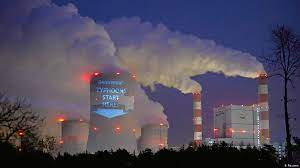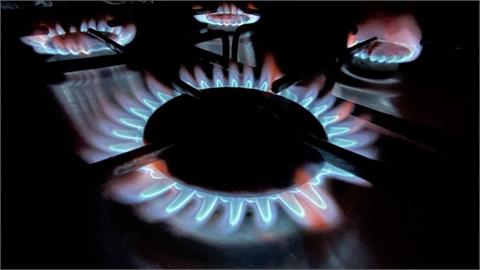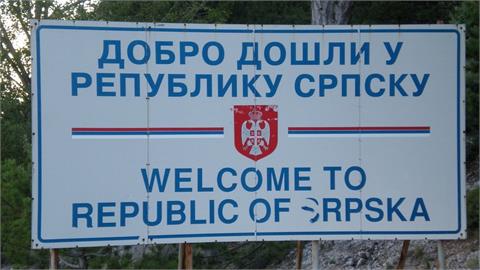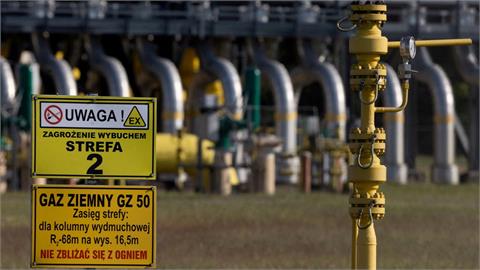by Kira Taylor* For decades, Germany, Poland and the Czech Republic have been at the heart of Europe’s so-called “lignite triangle” which produces most of the continent’s coal-based electricity. But with climate change now a top political priority, the priority is shifting to renewables
UN secretary general Antonio Guterres says all OECED countries must phase out coal by 2030 at the latest in order to comply with the Paris Agreement on climate change.
The European Union’s objective, agreed by EU leaders in December 2019, is to reach net-zero emissions by 2050. That means Germany, Poland and the Czech Republic – the top three coal burners in Europe – are coming under growing pressure to transition to clean energy.
For those countries, ditching coal is no longer just an environmental argument, it is also increasingly an economic imperative. CO2 prices on the EU’s carbon market have hit historic highs in recent months, going above €40 per tonne for the first time in April after years spent languishing under €10.
This is making hard coal and lignite, the most carbon-intensive energy source, increasingly unviable economically. A recent report by think tank Agora Energiewende found most lignite units in Germany, Poland and the Czech Republic will become permanently unprofitable in the second half of the 2020s.
“The time of coal-fired power plants are coming to an end, and many units are no longer profitable. These market trends need to be reflected in national strategies and coordinated in the countries of the coal triangle,” the report says.
However, coal phase-out strategies have been largely uncoordinated at regional or European level, with each country making decisions on their own. This is particularly visible when looking at social policy to deal with the economic and social impact of the transition.
“We’re indeed always in a situation where the policy ambition is at the European level, and the policy tools are at the national level,” says Judith Kirton-Darling, deputy general secretary at IndustriALL, a trade union federation.
“So you end up with a puzzle effect and regional disparities as a result of that, with leaders and laggards,” she told EURACTIV in an interview.
The debate about coal is not new to Germany. Hard coal there has already been unprofitable since the 1970s and has been subsidised for forty years in order to keep the lights on, says Philipp Litz, a co-author of the study from Agora Energiewende.
The question is how quickly the three countries will be able to close their coal power plants and transition to clean energy.
According to the German think-tank, removing all lignite-based power generation from the countries’ energy mix would reduce emissions from their power sector by 32%-50% from today’s emissions, depending on the speed of the transition.
But simply shutting coal mines and switching to cleaner energy sources cannot happen overnight. Building new energy capacity takes careful planning and years to put in place while the transition will also have a massive social impact that need to be addressed.
That issue came to the fore recently when Poland decided to prolong coal mining in the open-pit coal mine in Turów until 2044, despite a lawsuit from the Czech Republic, which complained about the risk of pollution to drinking water supplies.
Poland’s climate ministry said its decision was in the public interest as Turów supplies lignite, or brown coal, to a nearby electricity plant, which provides around 5% of Poland’s power.
PGE, the state-run energy group running the plant, said a sudden closure of Turów, which together with the power station is a major employer, could lead to economic collapse in the province and shake “the stability of Poland’s power system”.
Three approaches to transition
None of this came as a surprise, however. Thirty years ago, Germany, Poland and the Czech Republic were all highly dependent on coal.
Up until a few years ago, none wanted to be the first mover, but increasing environmental and economic pressure, combined with dwindling resources, has forced them to move, said Aleksandra Gawlikowska-Fyk, co-author of the report at Forum Energii, a Polish think tank.
A concern for all three countries is the security of their energy supply once coal plants are closed.
The Czech Republic and Germany are a step ahead of Poland in the transition, having both set up a coal commission to set a phase-out date and deal with the social and economic impact of the transition.
Germany has decided to phase out coal by 2038, while the Czech Republic’s decision has faced delays. Some were pushing for a 2033 phase-out, but recent changes in the government have increased the likelihood that it will adopt its coal commission’s recommendation of 2038.
Out of the three, Germany has made the most progress towards renewables, reaching 50% of renewables in its energy mix.
Czechia, meanwhile, has the advantage of having nuclear power, which doesn’t emit carbon dioxide. The country’s six nuclear reactors supplied 35.2% of Czechia’s electricity in 2019, while Germany agreed to close its last nuclear plant by 2022, making its climate objectives harder to attain.
“If Germany would have started to phase out coal instead of nuclear, this would most definitely have had a positive effect on the overall emissions of the country,” said Litz.
The social aspect of the transition is also a huge question mark hanging over each country. According to Litz, the coal phase-out in Germany is roughly in line with the retirement age of those working in the coal mining sector, but regions still need to work out what jobs are possible for the next generation.
Poland restructuring, not retiring
Warsaw for instance, is developing an electric vehicle battery supply chain in Silesia, Poland’s most coal-dependent region where mining continues to play a major role in the local economy.
And with most of its electricity still generated from coal, the transition in Poland is expected to take longer than in wealthier Germany.
This month, the Polish government came to an agreement with unions to shut the last coal mine in 2049, just before an EU deadline to hit net-zero emissions by 2050. Although environmentalists decried the deal for lacking ambition, trade unions reminded that the agreement was a painful one to strike.
“Let’s remember, the scale of this is half of Europe’s coal miners today covered by this agreement. So it’s colossal. And this is really happening at pace when you compare to the amount of time other countries took to negotiate, for example in Germany,” says Judith Kirton-Darling, a former British MEP who is now deputy general secretary of IndustriALL, an international trade union organisation.
According to Kirton-Darling, the Polish mine closure deal “is a backstop plan for the workers affected” and doesn’t prevent the coal mines from closing earlier.
“You have to get people on the train, to be heading in the right direction, to then continue the process. And it could be that as we continue in our journey, that actually the train speeds up in the future,” she told EURACTIV.
At Agora Energiewende, the assumption is that the closures will happen sooner.
“2049 does not seem realistic at all and miners know it, but I think they want to keep it working as long as possible because this is something that they are still profiting from,” said Lidia Wojtal, a climate-energy policy expert at the German think-tank.
According to her, “there’s also this kind of ethos of Polish miners being the basis of energy security”. But that may be changing due to the economic crisis caused by the COVID-19 pandemic, which is accelerating the closures, she said. “We had the pandemic, which broke this kind of unity thinking about the necessity to support coal mining at all cost. People are losing jobs, losing health, and none of these groups that have been hurt by the pandemic is getting this kind of support”.
Meanwhile, the Polish government is seeking to nationalise coal plants currently owned by energy companies and put them into a so-called “bad bank” of unprofitable assets that will receive state funding until they can be put offline.
In a statement, the Polish ministry of state assets said this would enable a “gradual and long-term transformation of the power sector” by replacing coal with low-carbon and green sources.
Despite an over-reliance on coal, Poland is beginning to take steps towards cleaner energy. Electricity production from coal dropped from 90% to below 70% for the first time last year, mainly thanks to an increase in consumer solar power. Solar capacity increased from 1.5 GW to 4 GW in 2020.
The country aims for 50% renewable energy by 2030 and is currently changing the constricting “10-H” law, banning turbines from being closer than 10 times the blade height to buildings and protected areas.
Poland’s largest energy company, PGE, is already looking at renewable energy, with an increase of 3.5GW in wind energy and 3GW in solar power planned before 2030.
“Ultimately, the company’s business will include electricity generation from renewable sources, low- and zero-carbon heat generation, reliable network infrastructure and modern energy services. An all-out upgrade and conversion to green energy requires a huge financial, organisational, economic and social effort from PGE Group,” the company said.
Most also agree that Poland will need gas to support this transition, particularly until the early 2030s when Poland plans to open its first nuclear power plant.
But Wojtal warned that there is a risk that Poland becomes over-reliant on gas and repeats the current difficulties with coal.
She also warned against a fast transition, saying: “This acceleration is good, but if you do so much at the same time without a coherent plan, you may expect that some of the transition’s elements are not going to work at all. Some of them will be omitted, ignored, or not take into account long-term impacts on both the economy and society.”
*Energy and environment journalist @euractiv
(euractiv.com, May 4, 2021)




